Hi, I’m Liesel
I’m a third year PhD student at Florida State University studying creative writing and ecocriticism. I was raised in South Carolina and went to college in my home state before moving to Washington DC to pursue my Master’s degree in creative writing, and then down to Tallahassee for my PhD program. Currently, I live near Florida State with my husband and my dog, Dunder, named after a certain paper company, as I adopted him from a shelter in Scranton, PA.
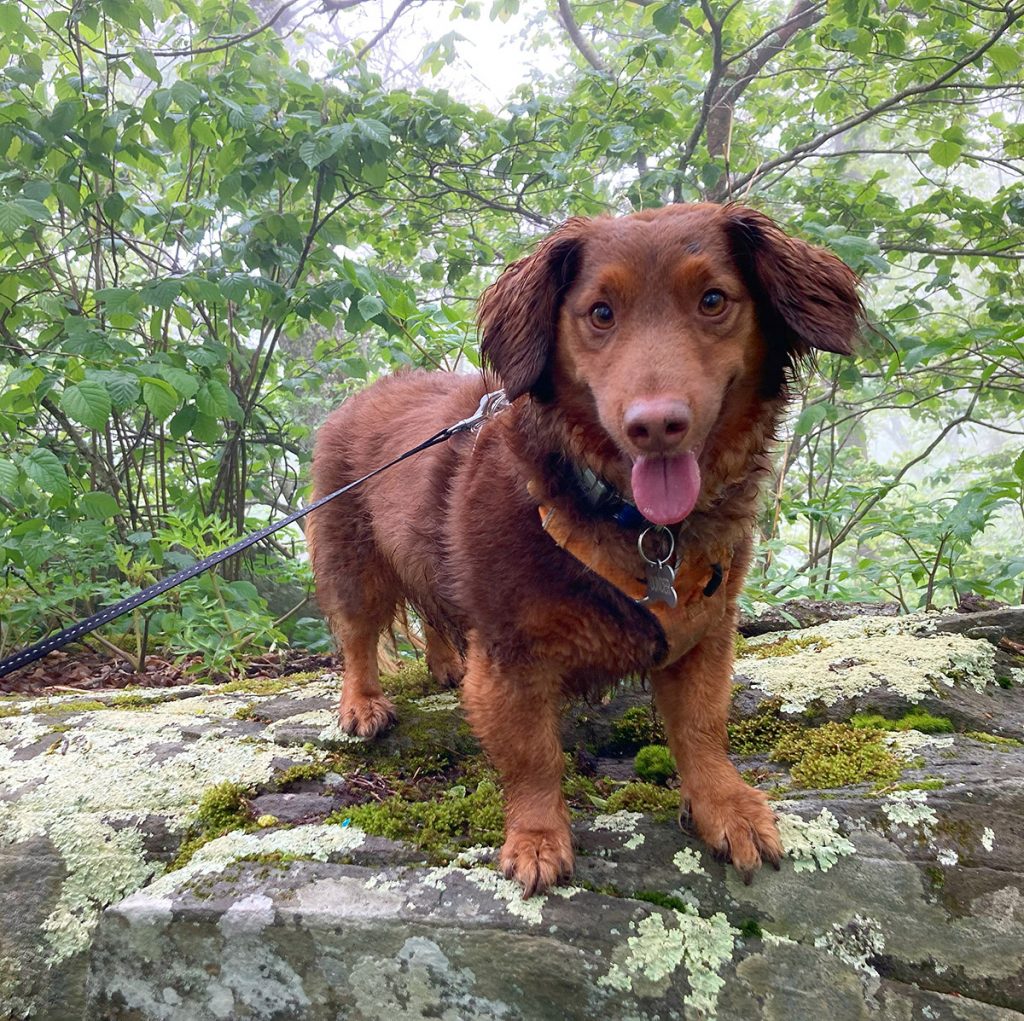
While most people know Washington D.C. for its marble monuments, I spent a lot of my time in DC in parks. Walking along paved multiuse pathways tracing the Potomac, I could see bald eagles feeding their young in weighty nests, or at Huntley Meadows, I could see migrating waterfowl like Northern Shovelers via a wooden boardwalk that cut through wetlands. My favorite place to go, however, was Shenandoah National Park—a two hour drive from the city—where I often saw bears on the paths that meandered up and down the park’s narrow ridge. Shenandoah has the largest concentration of black bears anywhere in the United States—there’s about 1 bear per square mile—and on almost every trip to Shenandoah, I would see a bear, sometimes a mom and cubs. At times, I miss the mountains and intense orange and yellow autumns—but I was excited to see my first ever Florida bear just a few weekends ago, driving through Ocala National Forest.
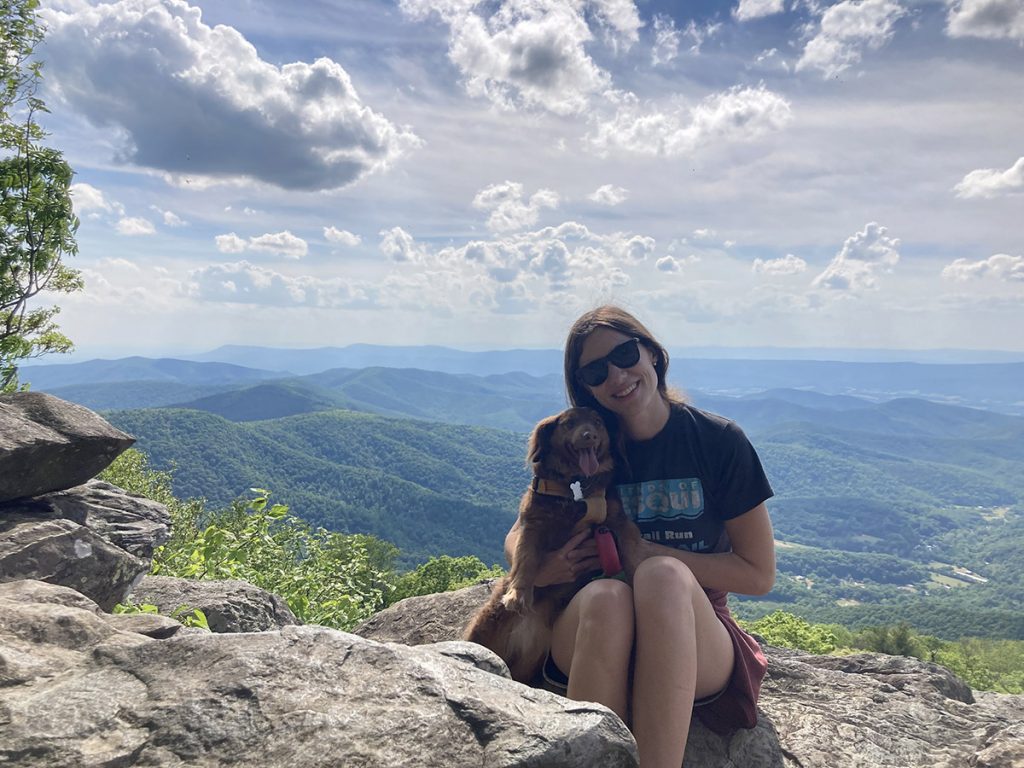
Moving to Tallahassee and enrolling at FSU
Moving to Tallahassee has not been what I expected—it’s really more like Georgia here than what I pictured Florida would be like—but I’ve been pleasantly surprised by the plethora of ways to get outdoors. In town, I love to walk around the lakes at Lafayette Heritage Preserve or to walk beneath the spidery live oaks at Elinor Klapp-Phipps Park.
My favorite place to visit, however, is St. Marks. My husband is currently training for the Tallahassee half marathon, and together, we participate in what he calls, St. Marks Saturdays, him running miles of trails, me biking and birding, the two of us meeting up at finish line. I’ve been enamored with St. Marks since I moved to Tallahassee, but biking has allowed me to see a wilder part of St. Marks than I saw walking the trails closer to the main road. On the back sides of the Mounds pools, or along sections of the Florida Trail, I have seen wild hogs swimming with their piglets in tow, clusters of roseate spoonbills and wood storks, and river otters undulating beneath tannin-stained water.
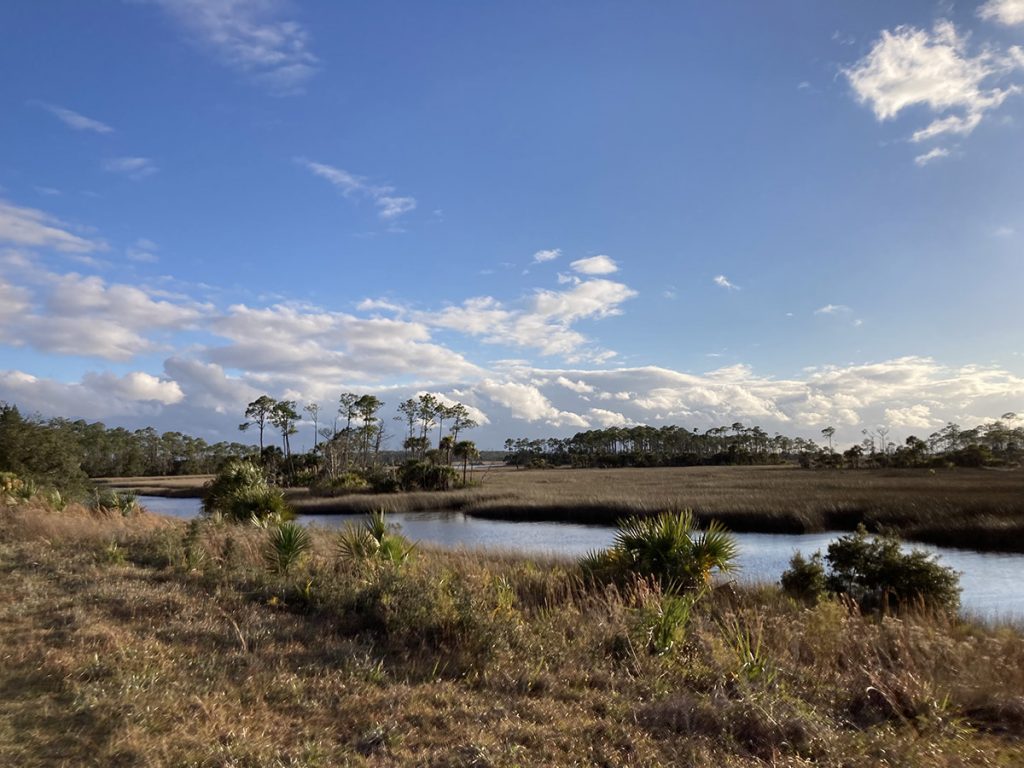
I moved to Tallahassee during the height of the pandemic, in Fall 2020, and like many at that time, I spent a lot of my time at home. But, for the first time, I now had land on which I could cultivate a garden. In the mornings, I took classes via Zoom and read books and articles. One of my favorite classes I took was an ecocriticism class. Ecocriticism is the study of how we write about, or conceptualize our relationship with nature, and after I finished reading medieval bestiaries or essays on how colonialism shapes our view of the natural world, I would lace up my tennis shoes, put on rubber gloves, and work on pulling up invasive cat’s claw and Asiatic dayflower from my garden. This experience, this blending of academia and physical labor, inspired me to write about the way we think about weeds for The Dodge. There are many noxious Florida weeds in this essay that some of you might recognize in your own gardens.
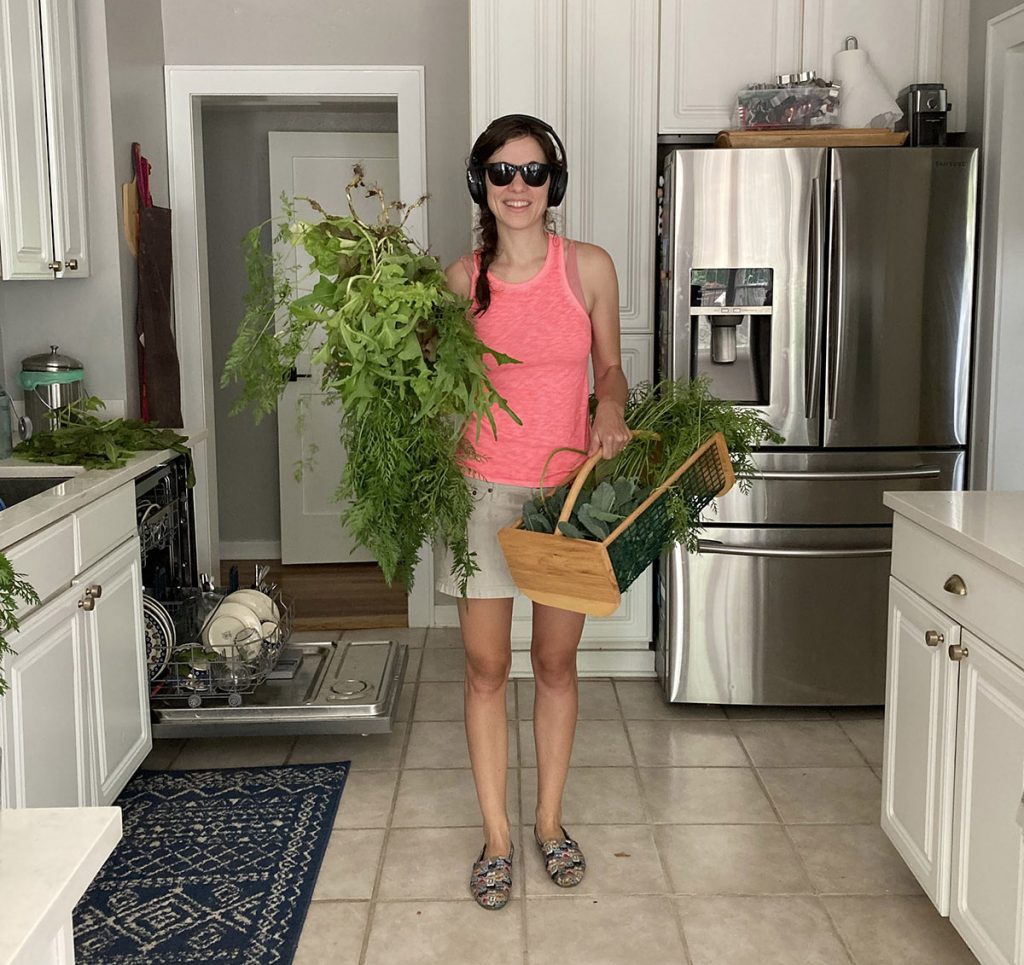
I like to think that I am equal parts writer and outdoorswoman.
My creative writing is often ecological, and mostly nonfiction. In 2016, I published a guidebook to South Carolina’s natural areas with Hub City Press, an amazing independent press in South Carolina. I wrote the book with my mom, a former journalist, the two of us coming up with the idea after taking naturalist classes together and realizing how many of South Carolina’s ecological wonders were hidden from us for so many years. The book braids history and ecology, examining why land was set aside, what makes it spectacular, what interesting and rare flora, fauna, or other features are found there, and when is the best time to go. What excites me about the WFSU Ecology Blog is I feel like it is doing something similar for North Florida—offering an in-depth look at the amazing things there are to see and do around the Tallahassee area.
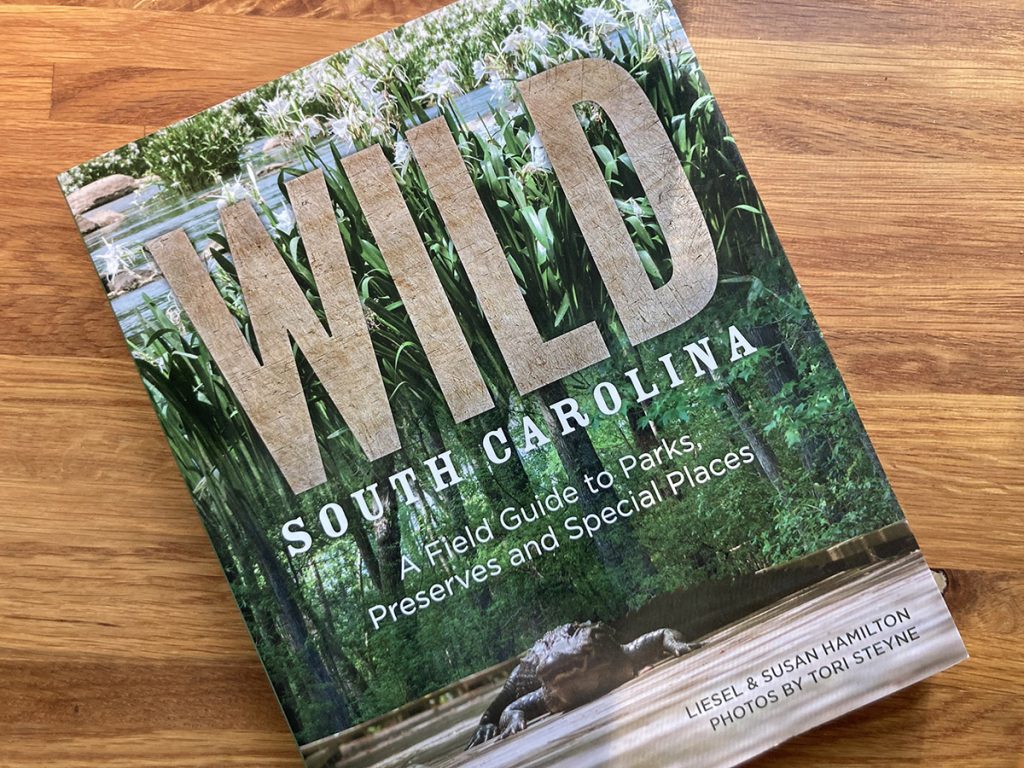
Currently, for my creative dissertation, I’m working on a collection of essays about birds and mental illness, exploring the way nature can be healing, and giving voice to anxiety and depression. That kind of writing is very different from what I’ll do for the WFSU Ecology Blog, but I’ve published it in places like Hobart Pulp and The Citron Review, if you’re interested in checking it out.
In the process of writing those essays, I’ve become somewhat of a bird lady. Before moving to Tallahassee, I was pretty ambivalent about birds, but Tallahassee really is “for the birds”—the egrets, the herons, the ibises, and Pinky the flamingo, are the megafauna of this region. I’ve found that birding is a slippery slope—once you learn a few, you find yourself hanging bird feeders in your yard, buying binoculars, downloading eBird onto your phone, and wearing hats embroidered with pileated woodpeckers.
I’m excited to write about birds and everything else North Florida has to offer in future blog posts, and to have another excuse to get outside in this fascinating state that has become my home.
Up next for Liesel- Wakulla Springs Wildlife Survey
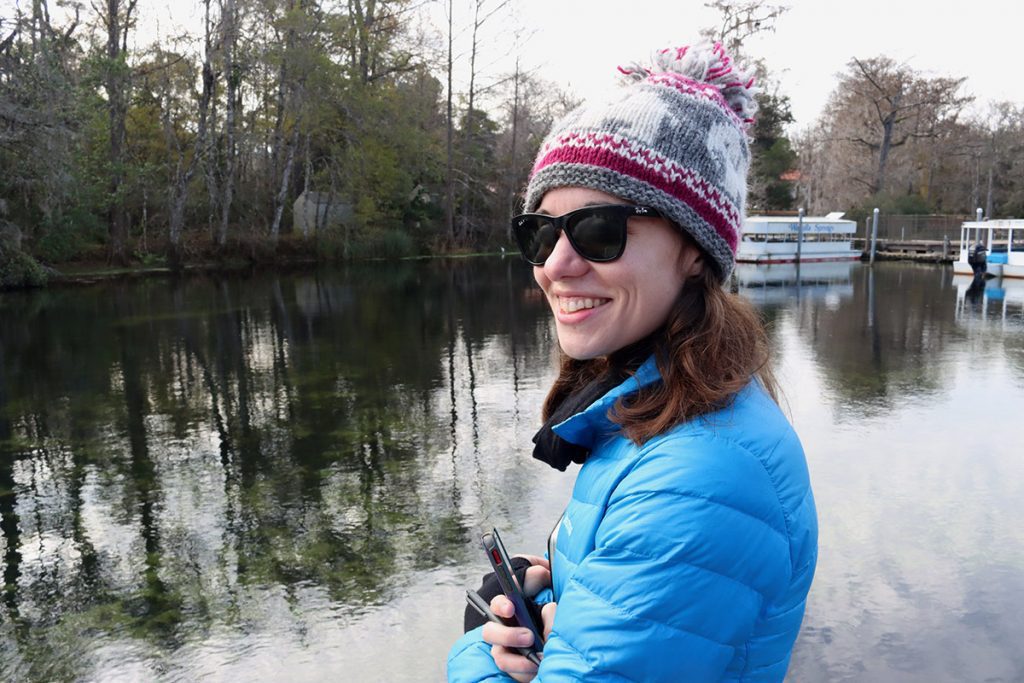
Look for Liesel’s next post later this month. She and Rob tagged along on a Wakulla Springs Wildlife Survey in December, joining volunteers Bob Thompson and Doug Alderson. Bob and Doug shared their experiences surveying the spring run over the years, and their favorite photos (so many good photos). They and the data they collect have a lot to tell us about the spring.
